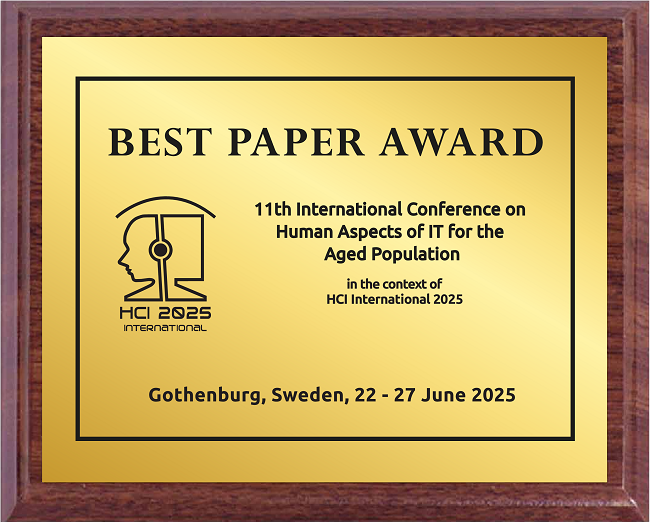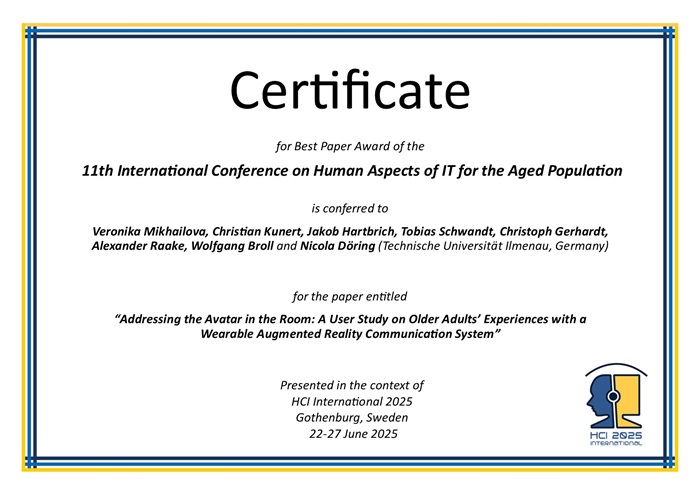The Best Paper Award of the 11th International Conference on Human Aspects of IT for the Aged Population
has been conferred to
Veronika Mikhailova, Christian Kunert, Jakob Hartbrich, Tobias Schwandt, Christoph Gerhardt, Alexander Raake, Wolfgang Broll and Nicola Döring (Technische Universität Ilmenau, Germany)
for the paper entitled
"Addressing the Avatar in the Room: A User Study on Older Adults’ Experiences with a Wearable Augmented Reality Communication System"

Veronika Mikhailova
(presenter)

Best Paper Award for the 11th International Conference on Human Aspects of IT for the Aged Population, in the context of HCI International 2025, Gothenburg, Sweden, 22 - 27 June 2025

Certificate for Best Paper Award of the 11th International Conference on Human Aspects of IT for the Aged Population presented in the context of HCI International 2025, Gothenburg, Sweden, 22 - 27 June 2025
Paper Abstract
Staying socially connected is vital for older adults’ well-being. This study explores how wearable augmented reality (AR) can enhance their communication experiences. N=16 older adults from Germany used a prototype wearable AR communication system to engage in a conversation task with a realistic avatar representing a remote communication partner. Their experiences, focusing on observed user behavior, perceived usability, user engagement, social presence, and intention to use, were assessed through questionnaires, scales, think-aloud protocols, and interviews. Overall, participants reported positive and engaging experiences. Despite concerns about the headset’s ergonomic fit and the avatar’s limited emotional expressiveness, a high degree of social presence was achieved. Most participants were willing to use the system, particularly if social isolation became a concern. Our findings demonstrate wearable AR’s potential to improve interpersonal communication among older adults and provide design insights to better address their social and usability needs. Specifically, it emphasizes the importance of enhancing the avatar’s emotional expressiveness, particularly when interacting with familiar individuals, to effectively engage older adults and foster communication satisfaction.
The full paper is available through SpringerLink, provided that you have proper access rights.


